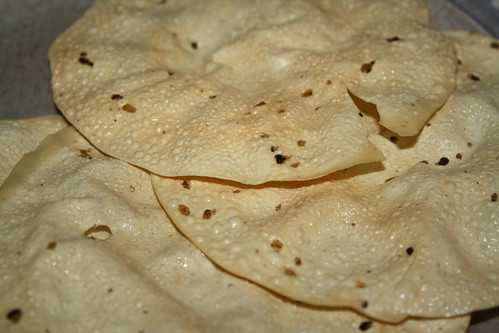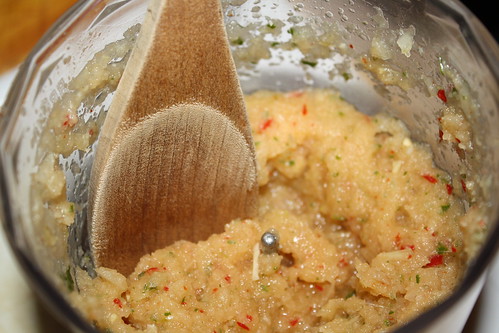A couple of weeks ago I posted a list of microwave food hacks.
It’s not right to post them without testing them out. Let’s start at the bottom of the list: microwaving pappadums.
Traditionally pappadums are cooked in hot oil. You take the little chickpea based wafers, you take a ton of superheated peanut oil and you give them a quick blast. In theory, this isn’t fattening because the oil is so hot that the pappadum doesn’t actually absorb any.
If you’ve ever eaten a pappadum you know that that’s a fair bit of rubbish!
We’ve long been fans of microwaving pappadums (you do, literally, just pop the pappadum in the microwave on some kitchen towel and give it a quick blast on high on both sides) but while they’re tasty they’re only a pale approximation of the real thing.
So when I read that you could brush your pappadum with oil (or melted ghee) before microwaving for a more ‘authentic’ finish I had to give it a go.
I brushed both sides of the pappadum with peanut oil before placing on kitchen towel and microwaving on high. With the oil on the pappadum needed longer than usual (that is, without) but it still needed rotating and flipping.
Combining this extra cooking time with the bother of brushing the things with oil … was it all worth it?
No.
The pappadums didn’t expand the way they do in hot oil – they just stayed small and the microwaving clearly didn’t get the oil nearly hot enough, so they ended up covered with a slick of grease. It was really the worst of both worlds: the oiliness of a pappadum cooked in not hot enough oil combined with the slight raw flour taste you get when you microwave them.
So in future, we’ll be spending the time perfecting our frying technique (get the oil super hot!) when we’ve got time, or using the microwave (without oil) when we’re in a hurry.



